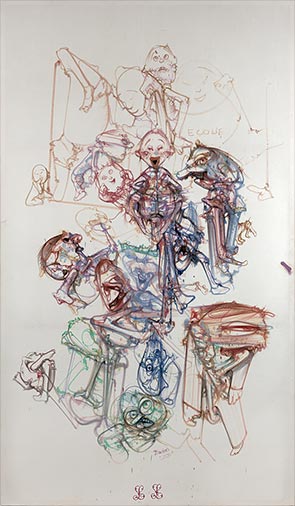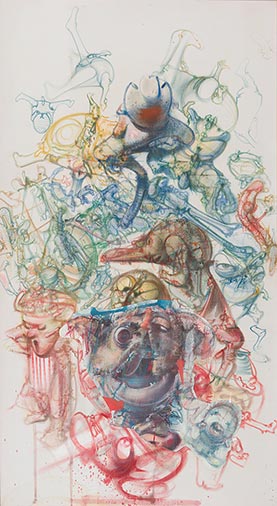Dado by Jacques Henric
Rites of passage
The text Rites de passage by Jacques Henric initially appeared in the catalog to the exhibition Le Trousseau de Maria L… at the Rachelin Lemarié gallery in November 2000. The exhibit showed paintings by Dado on bedsheets that had belonged to the former owner of his house in Bez-de-Naussac.
Click on the images to enlarge them
(large and extra large sizes)
❧
Fullscreen
slideshow
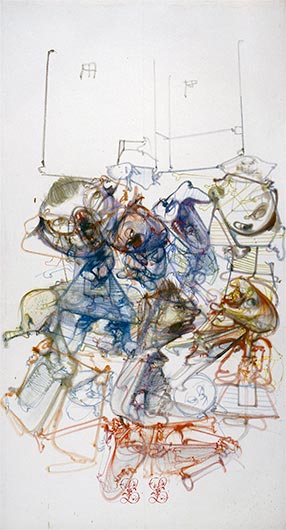
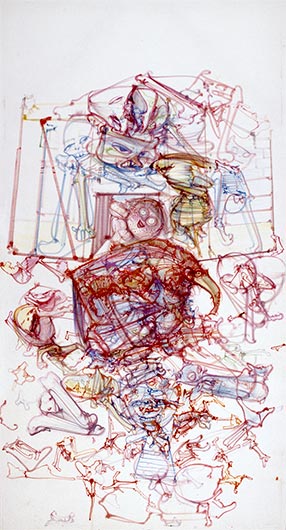
“Rites de passage — this is the designation in folklore for the ceremoniesthat attach to death and birth, to marriage, puberty, and so forth.”
Walter Benjamin, Arcades Project (Harvard, 1999, p. 494)
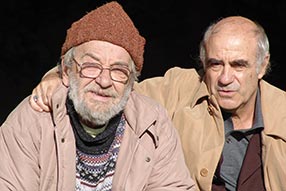
In the house in the Aveyron village that Dado occupies intermittently, there once lived a woman, Maria Lauré. When I say “lived,” I mean, lived her entire life: growing up, loving, suffering, sleeping, dreaming, working, in tears, laughter, and pleasure…
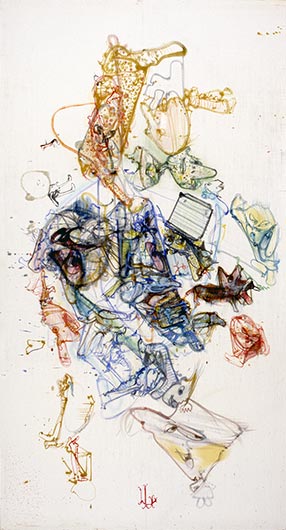
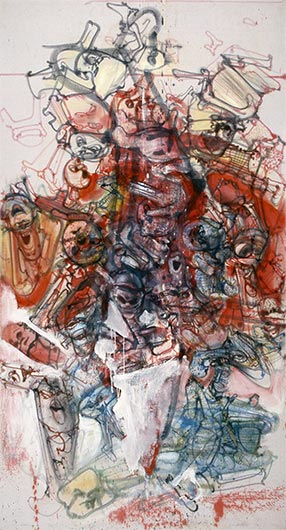
The most complete realization of the daring efforts of that scribe called an artist, and which consist in trying to tap into another human being, is when he is able, by this passage into someone else’s existence, to recreate himself; and not simply through their life but on and into their death. Such an experience, such a journey requires immense concentration and incredible delicacy from those who risk it. Dado possesses this gift: that’s why it fell to him. Here he came across – offered to him, prepared for him, laid out for him years since – a set of sheets embroidered with the initials M. L., – that is, the most personal relic of the intimacy of daily life, ready and waiting for his superb and moving tribute. One is born on a sheet, one dies on it, one has orgasms on it, one transmits life on it. And it can be painted on too. I mean that, on these magnificent expanses of old cloth worn to a precious transparence, Dado, combining ardor and perfect mastery (as with fresco, mistakes cannot be corrected on such a fragile support), recreated, in its very weft and weave, a life – something that is always a mixture of heaven and hell.
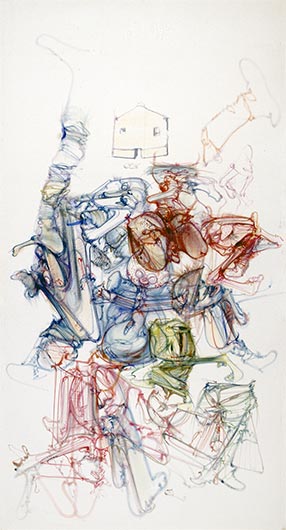
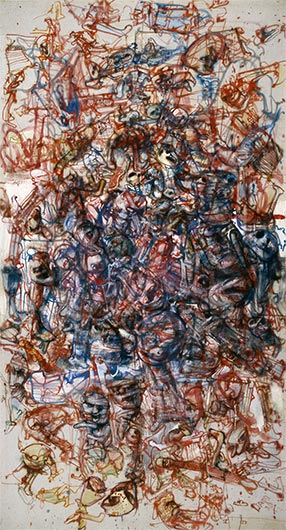
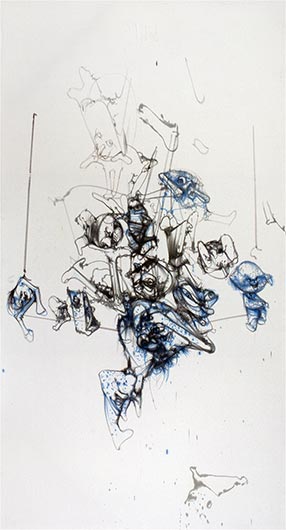
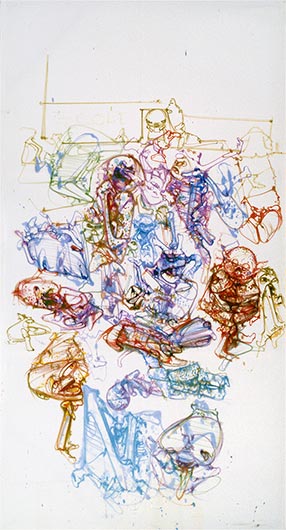
Thus, by her trousseau entrusted to Dado, the suitably-named Maria Lauré (Laure the Muse, Mary, she who is without sin…) is re-born. Trousseau, from the French trousser:
1) To load a beast of burden (isn’t the artist one? but this will-o’-the-wisp poet Dado has a broad back);
2) To lift a woman’s underskirts and to possess her sexually (and doesn’t an artist lift every petticoat in the world? Does he not harbor all the femininity under the sun?);
3) To set about a work with the utmost speed (isn’t speed of gesture an important characteristic of Dado’s art of painting?);
4) Final meaning: trousseau, a diminutive of trousse (case), a young girl’s linen prepared for her wedding or noviciate.
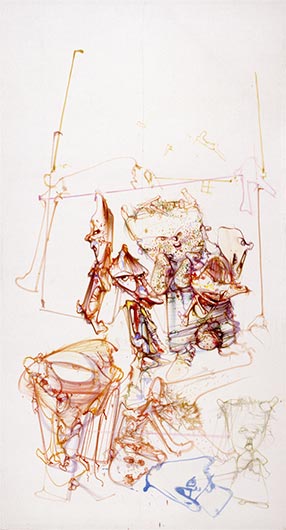
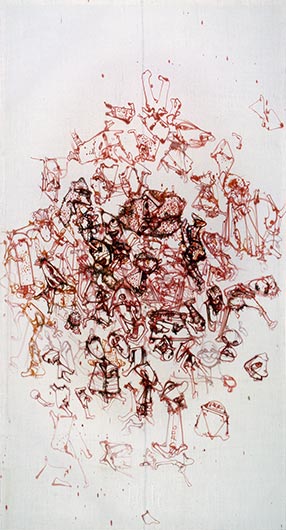
The age at which a girl enters into religion (i.e., becomes a bride of God) or weds (i.e. enters in this strange religion which marries love and sex), she is roughly speaking at the age when each of us, according to erudite calculations made by the Fathers of the Church, is called to be reborn. Thus Dado is not here showing us shrouds, but veils of life. The life of the young Maria Lauré, indwelling, at the time of her trousseau, a body soon to become a body of glory. And your life, too, if you wish, if you can, if you can see it when you look at what Dado has seen for you. All he has seen beyond all the snares of evil and corruption from which every life, yesterday Maria Lauré’s, today yours, must deliver itself.
In short, the twice-signed sheets painted by Dado are the fabric of deliverance and of total freedom.
Jacques Henric
Translated from French by D. Radzinowicz
